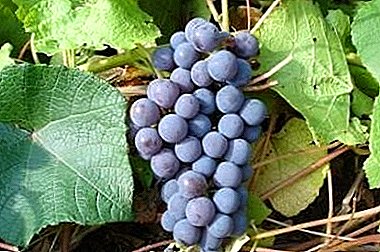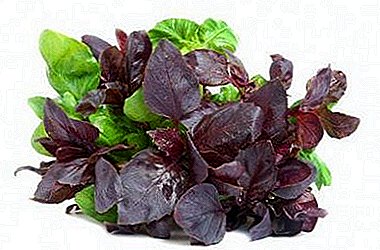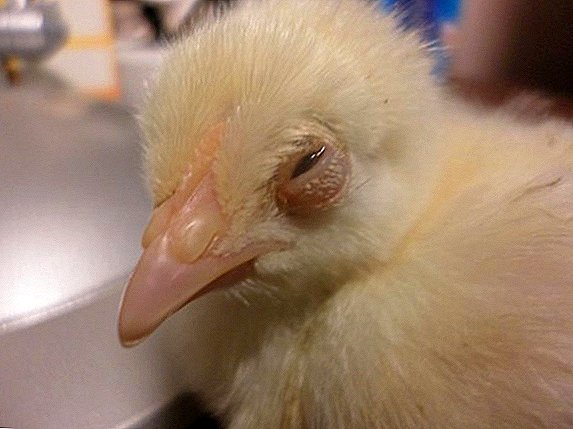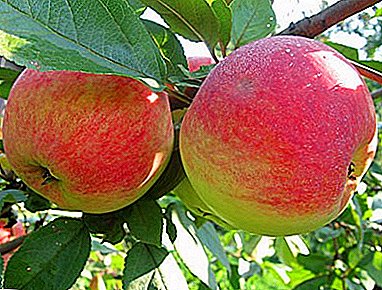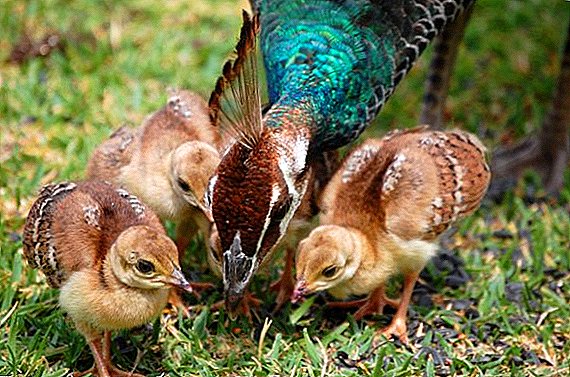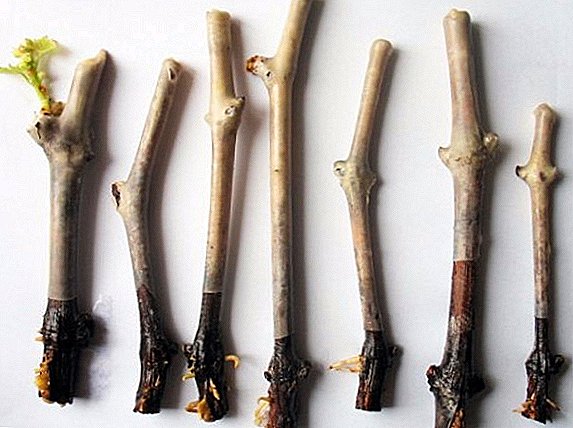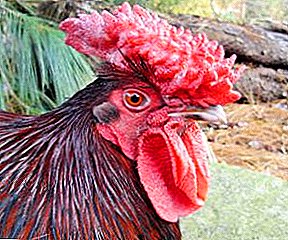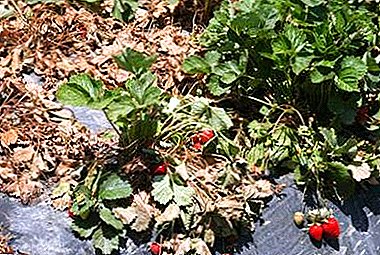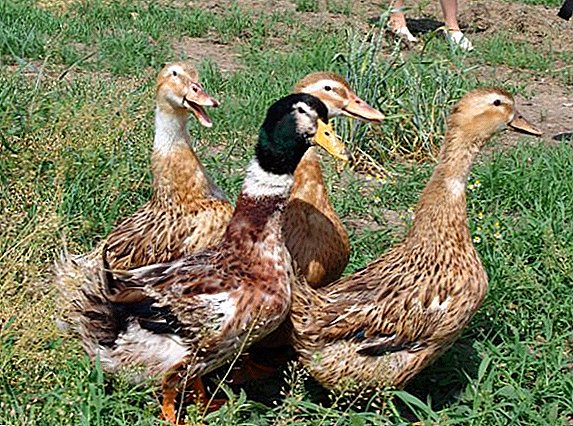 Does the owner of each farm sooner find it too late to decide on the question of which type of poultry is light and economical in cultivation and maintenance. And if you already have or had chickens, turkeys, geese, ducks, especially representatives of the Bashkir breed, are also a good option for meat and egg products. In this article we will analyze in detail the features, advantages and disadvantages of this species of birds.
Does the owner of each farm sooner find it too late to decide on the question of which type of poultry is light and economical in cultivation and maintenance. And if you already have or had chickens, turkeys, geese, ducks, especially representatives of the Bashkir breed, are also a good option for meat and egg products. In this article we will analyze in detail the features, advantages and disadvantages of this species of birds.
History of origin
The name of this duck breed speaks for itself: ducks were bred in the Republic of Bashkortostan at a well-known breeding bird factory, but, in truth, absolutely unexpectedly. While the main goal of industrial breeders was to improve the White Peking breed ducks, an involuntary change in the genotype occurred, and graceful large individuals of ducks of other colors began to appear.
Did you know? More in ancient China Doctors believed inThis meat is similar to Viagra, because due to the presence of amino acids and vitamins in a balanced form, the product has a beneficial effect on male potency.The experts supported and strengthened the development of this wonder, thanks to which the Bashkir duck since 2001 can still be freely bred both on large industrial farms and individually in its own farm.

Appearance and physique
The description of the outward appearance of the bird of the breed in question is as follows:
- torso - strong, medium in size;
- sternum - round, going forward;
- head - small, flattened on top;
- beak - wide and depressed, with expressively delineated plates and growth;
- neck - short, thick, curved outward;
- hoisted - large, muscular, short, widely moved apart;
- wings - tightly pressed to the body;
- plumage - gray, white, blue.
Important! There are more such colors Bashkir duckslike khaki (brown with gray tint) with various spots and black with white breast. Brightness is more pronounced in the drakes - the head is distinguished by a dark blue color with a green tint, and a white stripe is seen on the neck.
Character
This species of birds is very much appreciated both in the farm and in the household due to its positive nature. They are calm, friendly, get along well with other neighbors in the yard, get used to the owners quickly. 
Varieties
Ducks of this breed are divided into three main varieties and differ among themselves not only in color, but also in genetic characteristics. Consider each of them separately and in more detail.
Check out the features of breeding mandarins, musk ducks, Star-53 ducks, Bashkir ducks, Peking ducks, as well as Gogol ducks and a blue favorite.
White
White Bashkir duck has a dominant snow-white tone in its own plumage. During the semiannual time period, the duck of this species is able to carry about 120-130 eggs, while by 2 months of its life it reaches a weight of 3.5 kilograms. If you compare it with two other varieties, it is less demanding in the amount of food.
Did you know? Each year, about two million ducks are bred in the People’s Republic of China: this represents 75% of world production. That is why in this country, they enjoy maximum popularity and demand.
Gray
The gray variety of the Bashkir duck possesses not less attractive signs:
- the number of eggs laid over 6 months is 115 copies;
- the total weight of the bird at the age of two months is at the level of 3.5 kilograms.

Blue
The Blue Bashkir in 60 days of its life reaches only 3 kilograms, but the number of eggs laid is comparatively more compared to the Bashkir white duck: as a rule, their number is 130 pieces per season.
Productive characteristics
According to the productive characteristics, the Bashkir duck breed belongs to the egg-and-meat one, while at the genetic level it has been established that the color of bird feathers significantly affects the number of eggs laid.
Learn how to breed ducks at home, how to raise ducks in an incubator, how to feed ducks and how to pluck a duck without hemp.
When they start to nest and what egg production
The average number of duck eggs per 40 weeks, depending on the variety of the hen, ranges from 215-230 eggs. Bashkir ducks begin to sweep already at 4 months of age. The main requirement for this is the creation of certain suitable conditions: complete nutrition and the availability of amenities. The separation of duck housing into two zones will be optimally comfortable: a rest area and a feeding area, preferably combined with each other by a special pool.
Egg color and weight
Eggs of the Bashkir ducks are very widely used for culinary purposes. According to the true connoisseurs, they are even tastier than usual and familiar to all of us chicken. The individual weight of each such egg is about 80-90 grams, the color is slightly grayish or with a slightly brown tint. 
Mass of duck and drake, meat yield
Already in the first month of life, small ducklings accumulate about 80% of their own adult weight: in their two months of age, they already weigh about 3 kg. Usually, the male of this breed in adulthood weighs 4 kg, the female - 500 g less, and with a balanced diet and decent care, their weight grows even faster.
Did you know? Birds, due to their vital need to turn their heads to clean the plumage, have more cervical vertebrae than mammals. In owls, this number reaches fourteen, ducks have sixteen, and a record number of neck bones (twenty-five) belongs to the mute swan. By comparison, the giraffe has only seven cervical vertebrae.
At the same time in the total mass almost no fat deposits are observed: about 70% of the total weight of the duck is highly nutritious meat in its pure form. According to its characteristics, it is tender and juicy, and most importantly - it does not have an unusual taste. 
Advantages and disadvantages
The advantages in the home maintenance of the bird species in question are the following aspects:
- high survival rate of ducklings (80%);
- excellent resistance of the immune system to various avian ailments;
- fast adaptability to other growing conditions, as well as a different climate;
- resilience;
- ease of growing and care;
- rapid mass gain - in order to extract the meat of the Bashkir ducks, it is enough to hold them until they reach 4 months;
- despite the large size, they are very compact and active, so they get along well in the backyard plots, and also feel great in small pens;
- at four months of age, egg production begins to develop in the ducks, gradually increasing;
- a small mass of fat in muscular meat (2-3%);
- low feed costs for weight gain;
- profitable and profitable species of birds in terms of meat and egg productivity;
- investments in the cultivation of ducks of this breed will be much less than the results obtained.
Important! Good health, high and high level of egg production, as well as the natural beauty of Bashkir ducks are among the best characteristics of these birds.
The relative disadvantages of these yard birds:
- increased appetite;
- strictly constant change of clean water to drink;
- differences in weight gain and level of egg production, depending on the variety and color of bashkirs.
As breeding practice shows, ducklings, Bashkirs, who can be purchased at an affordable price, have high health indicators. The level of preservation of this breed until they reach at least 3 months of life is equal to the rate of 97%. That is why the Bashkir duck is very popular in the poultry market and is easy to care for and profitable in terms of obtaining egg and meat products.



